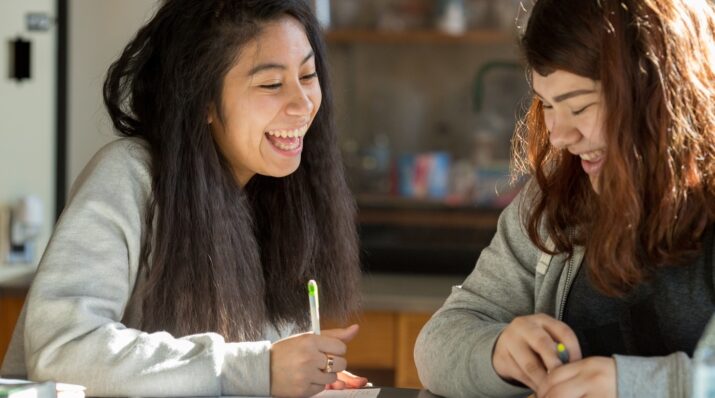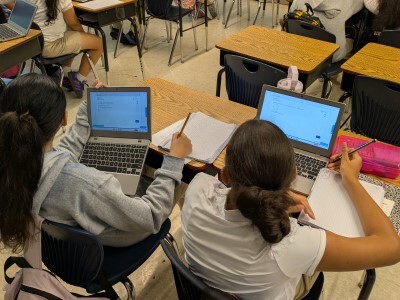Students Are People Too
Topics

We’ve all had the experience of truly purposeful, authentic learning and know how valuable it is. Educators are taking the best of what we know about learning, student support, effective instruction, and interpersonal skill-building to completely reimagine schools so that students experience that kind of purposeful learning all day, every day.
Teachers may use 4 pedagogical strategies to meet the needs of students who are the chronically absent, have a learning disability, or are easily bored.
Every learner has unique needs. Isn’t it time to create classrooms which recognize that?
Picture this: you’ve just joined a new team at work and have three co-workers who, by no fault of their own, pose real challenges. The first, Aaron, is efficient and effective but always missing work: he cares for his ailing grandfather and has health issues of his own. The second, Brandon, is dyslexic; he cares about his work and wants to do well but often takes twice as long others to complete the same task. And the third, Chantal, flies through her work in no time and spends her days complaining of boredom. You want to work productively with each of them, but you’re not sure how you can.
Now imagine a larger team full of people who are chronically absent, have some sort of disability, or are constantly ahead of everyone else. Welcome to my classroom.
As a high-school teacher, my relationships with my students are not unlike those office teammates. Classrooms are collaborative spaces—I work WITH my students to help them learn—and the individuals within them have diverse interests, abilities, and needs. The major difference, of course, is that firing a student for poor performance is absolutely unthinkable! If I am to reach my goals, every last team member, regardless of the challenges he or she presents, must accomplish as much as he or she possibly can.
The typical high school classroom, unfortunately, isn’t designed to meet students’ individual needs. Students are generally expected to learn the same things, at the same pace, as their same-age peers. Those who miss class can, in theory, get notes from their friends; students with diagnosed disabilities are entitled to special-education services under the law; and fast-moving students can work on enrichment activities. Yet friends’ notes can be unreliable. Even the best individualized education plans (IEPs) bump up against the one-size-fits-all approach of most inclusion courses. And finding extra work for faster learners can become an additional burden for already-overworked educators. As a result, these three vulnerable populations—the chronically absent, the learning-disabled, and the easily bored—tend to fall farther and farther behind.
Fortunately, teachers may use four pedagogical strategies to serve these students’ needs effectively. I’ve implemented these strategies in my own classroom, and I’ve seen them work wonders with not only the Aarons and Brandons and Chantals of the world, but also the rest of my students as well:
1. Blend Instruction.
A teacher’s lectures can only reach those students who are in class and able to follow along. Absent students miss them altogether, while slower-processing students may not be able to keep up. An online video lesson, however, can be watched from home, paused and rewatched for clarification, or sped through when its contents are easily understood. Replacing lectures with videos also frees a teacher to spend class time providing individualized instruction, at any level.
2. Self-Paced Structures.
We know that students learn at different paces. So why not provide each student the time he or she needs to learn each skill: no more, and no less? Set as few deadlines as possible—perhaps only for major assessments—and let students set their own paces through content. Every student, every day, has something appropriately challenging to work on, and no student is left behind or held back.
3. Mastery-Based Assessment.
We don’t do our slower learners any favors by pushing them into content they aren’t prepared to learn. Nor, for that matter, do we help faster learners by forcing them to complete work that builds skills they already possess. Rather than grading students based on their completion of assigned work, assess them based on their authentic mastery of assigned standards—and don’t let them attempt a complex standard until they’ve built the foundation they need. Mastery, after all, is the ultimate goal, isn’t it? Emphasize it now.
4. Support Metacognition.
Every student, in every classroom, experiences both successes and struggles—and every student has room to grow. Each lesson a student completes, therefore, provides an invaluable opportunity for reflection, where students can consider both what they did well and what they’ll improve upon in the future. Reflective learners are better learners because they understand what works for them. This process is essential.
The solutions that account for your co-workers’ (or students’) challenges are not complicated, but they do take creativity and hard work to implement. It isn’t easy going from a one-size-fits-all classroom to one that provides individualized learning experiences. But imagine a workplace in which Aaron can just as effectively finish his work from home, Brandon has all the time he needs to complete his assignments, and Chantal always has something challenging to do. It would be a smoothly functioning machine! With the right approach, the classroom can be, too.
Photo courtesy of Allison Shelley/The Verbatim Agency for American Education: Images of Teachers and Students in Action. CC BY-NC 4.0.




